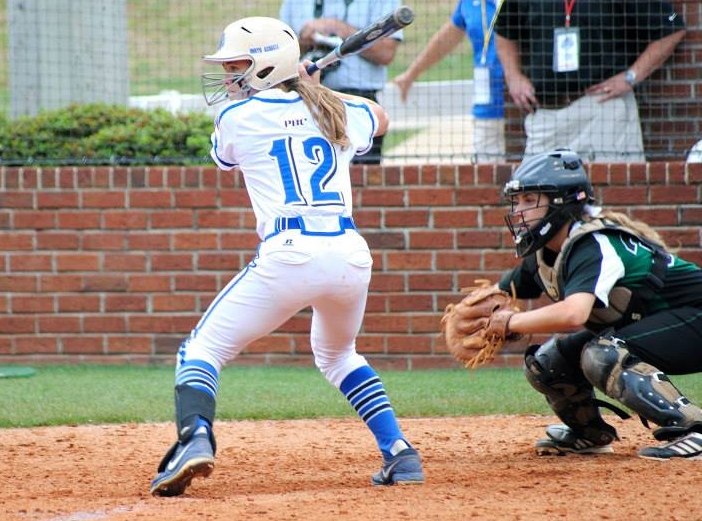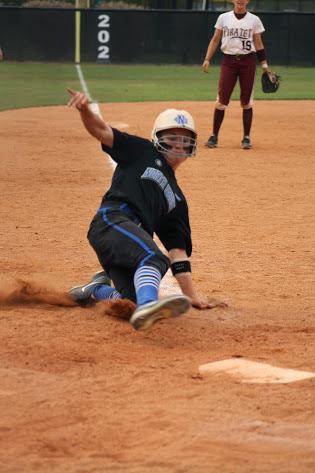Main Body
1. Rules
Watch this video to see the science behind the speed of the game of softball.
The rules designated by the Joint Softball Committee and WBSC promote the game having:
- Nine players on the field at one time: The pitcher, catcher, first baseman, second baseman, short stop, third baseman, right fielder, center fielder, and left fielder.
- The slow pitch game allows a fourth person to play in the outfield.
- The object of the game is similar to baseball, the team that has scored the most runs in seven innings is the winner.
- If the game is tied at the end of seven innings, then a game can go into extra innings or follow a tie-breaker rule by the given league until the game has determined a winner.
Slow pitch Softball Rules and Regulations
The game of slow pitch softball has different sets of rules and regulations depending on the league, level of play, and class of program. There is no way to list every rule included in all of these versions of the game, but there are similarities across these levels of play.
The game of slow pitch is played by two teams of ten players each. The teams take turns on offense and defense.
- The offensive team is the team that is batting, and the team that is able to score.
- The defensive team is the team that is in the field trying to keep the offensive team from scoring.
Most slow pitch softball teams are co-ed, a mixture of men and women, with a ratio of 5:5. However, teams can be single-sexed and the ratio can vary depending on association rules.
The basics of the game are simple. One defensive player, called the pitcher, pitches the ball to a batter, on the offensive team, who hits and tries to score without being put out. The batter runs around as many bases as possible before the ball is under control by the defending team. If the runner touches all three bases and home plate, then a run is scored. The object of the game is to be the team that scores the most runs in a complete game.
In the meantime, the defensive team is trying to keep the offensive team from scoring. They can catch balls hit directly off the bat in the air for an out, or by throwing to a base that the runner is forced to run to for an out. There are other ways to get “outs” too that we will discuss. Once the defensive team gets three outs, the teams switch. The offensive team becomes the defensive team, and the defensive team becomes the offensive team.
A full regulation game consists of seven innings. A complete inning is when both teams have batted one time. A game typically lasts between an hour and ninety minutes. Home and Visitor are determined by location, league, or coin toss. The batters are in a prearranged order that is according to the rules adopted. If the game is co-ed, then batters will alternate between a man and a woman. After all players have hit, the first person in the batting order will come back up to restart the second cycle, etc… When a hitter becomes the third out, the next hitter in the order will come up to bat the next inning. The prearranged batting order will stay the same throughout the entire game.
A run is scored if a baserunner touches first, second, third, and home plate. A run will not be scored if the third out of the inning is a result of the following: the batter runner legally being put out before legally touching first base, a baserunner being forced out due to a batter becoming a batter runner, a runner being put out by a tag or a live ball appeal prior to the preceding runner touching home plate, or a preceding runner being called out on an appeal play.
A run rule is typically in effect during a regulation game. Depending on league rules adopted, if a team is leading its opponent by at least 12 runs after 3 innings, or 10 runs after 4 innings, or 8 runs after 5 innings , then the game will be called complete. If a game is tied, the game will continue to play extra complete innings until the tie is broken, or they will use the International Tie Breaker (ITB). Click HERE for a description of ITB.


Below are the three top governing bodies for the game of slow pitch softball.
- Amateur Softball Association of America (ASA)
- National Softball Association, Inc. (NSA)
- The United States Specialty Sport Association (USSSA)
Fast pitch Softball Rules
While slow pitch softball has its own rules and regulations, so does Fast Pitch: access the American Softball Association’s website for fast-pitch rules.
Fast and Slow pitch difference
The ASA created a CHART to show you the differences in rules for fast-pitch and slow-pitch.

